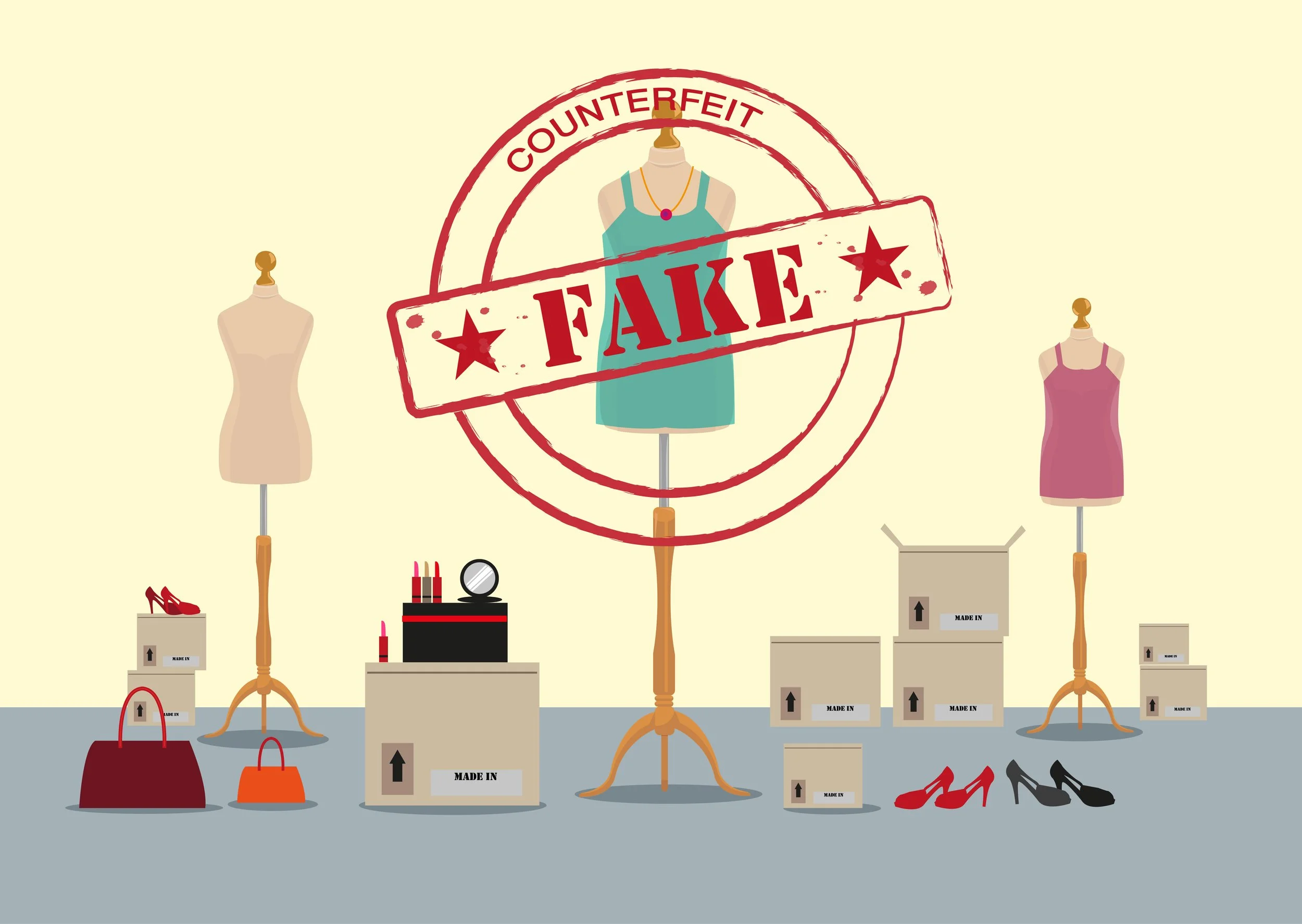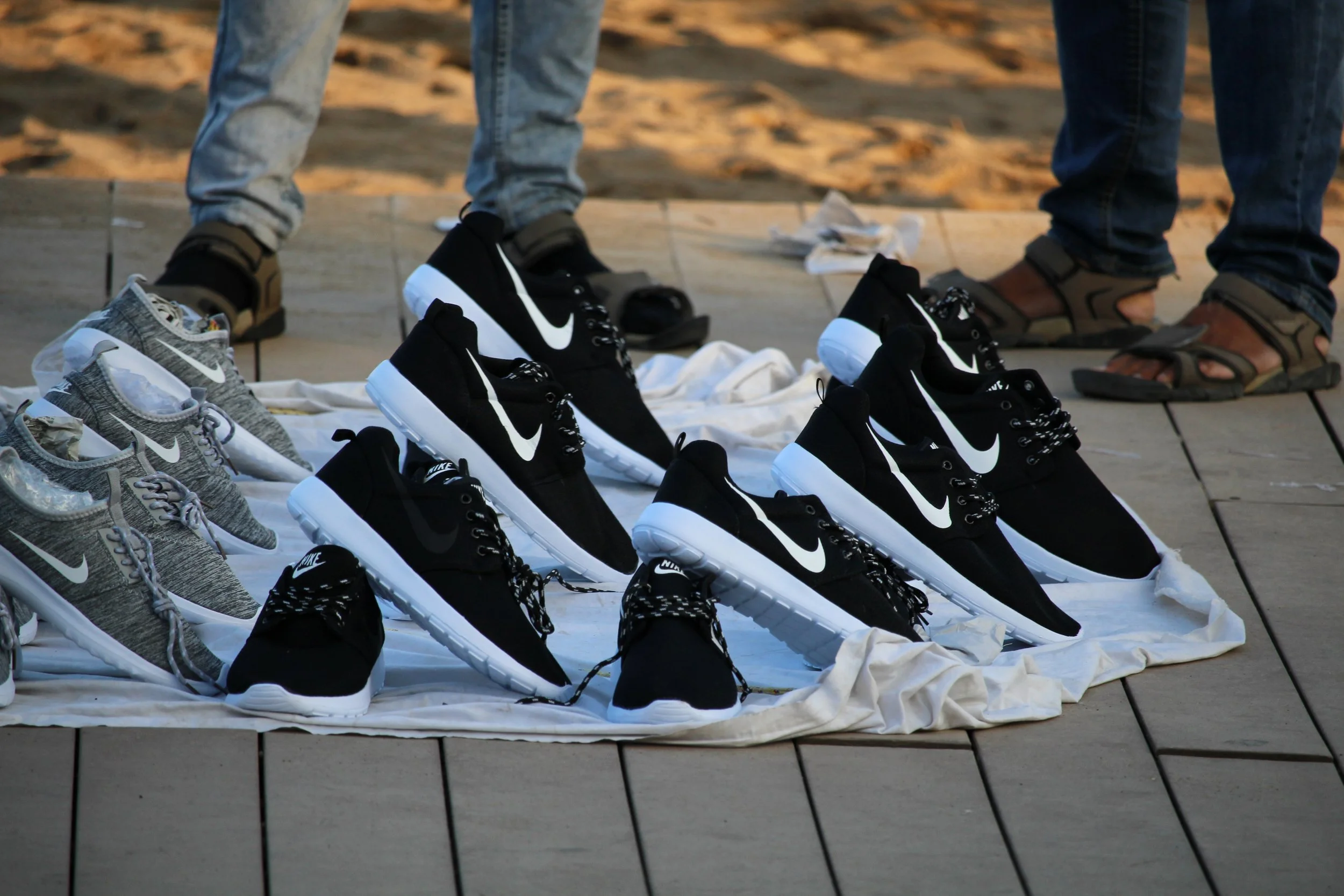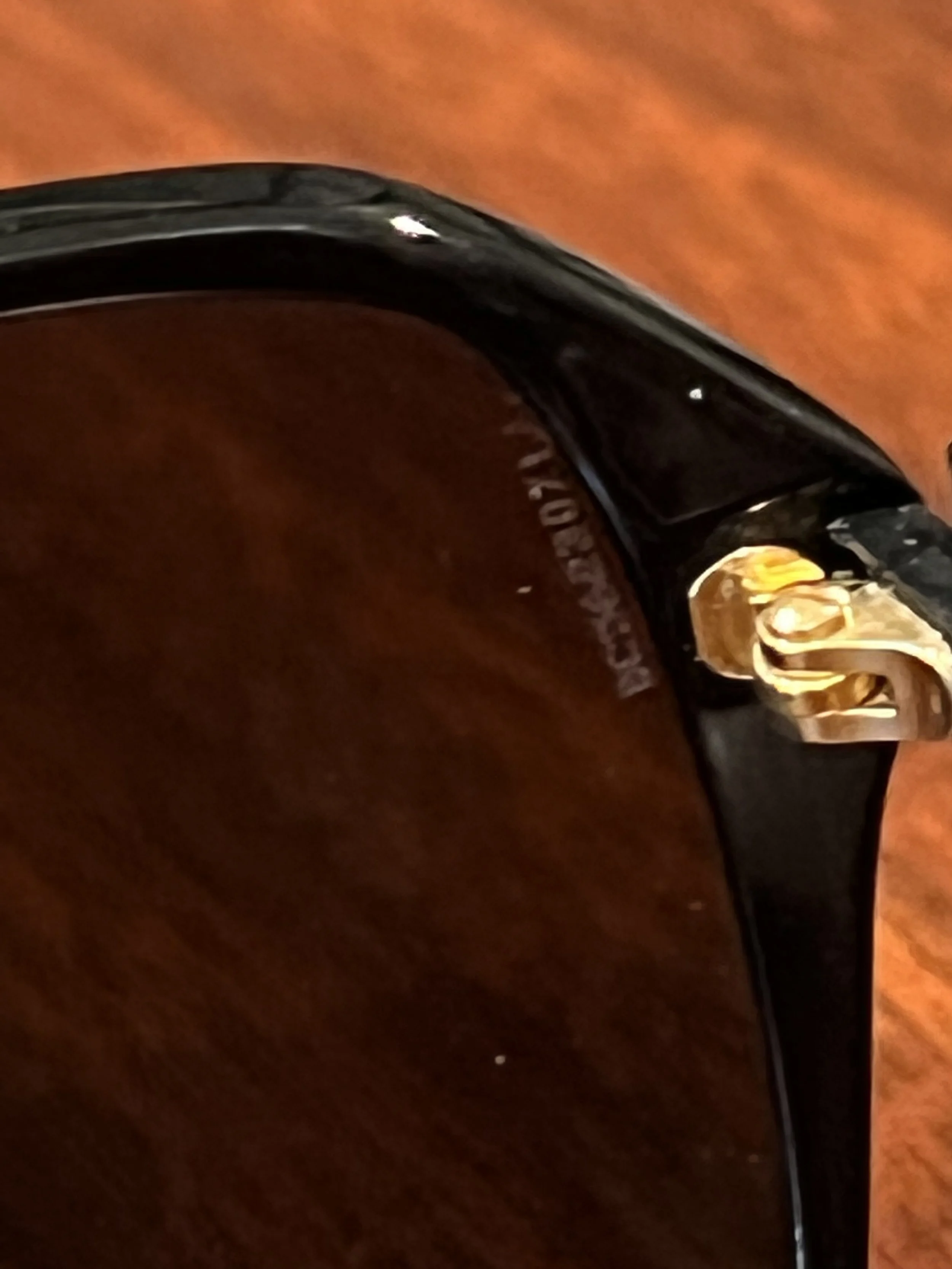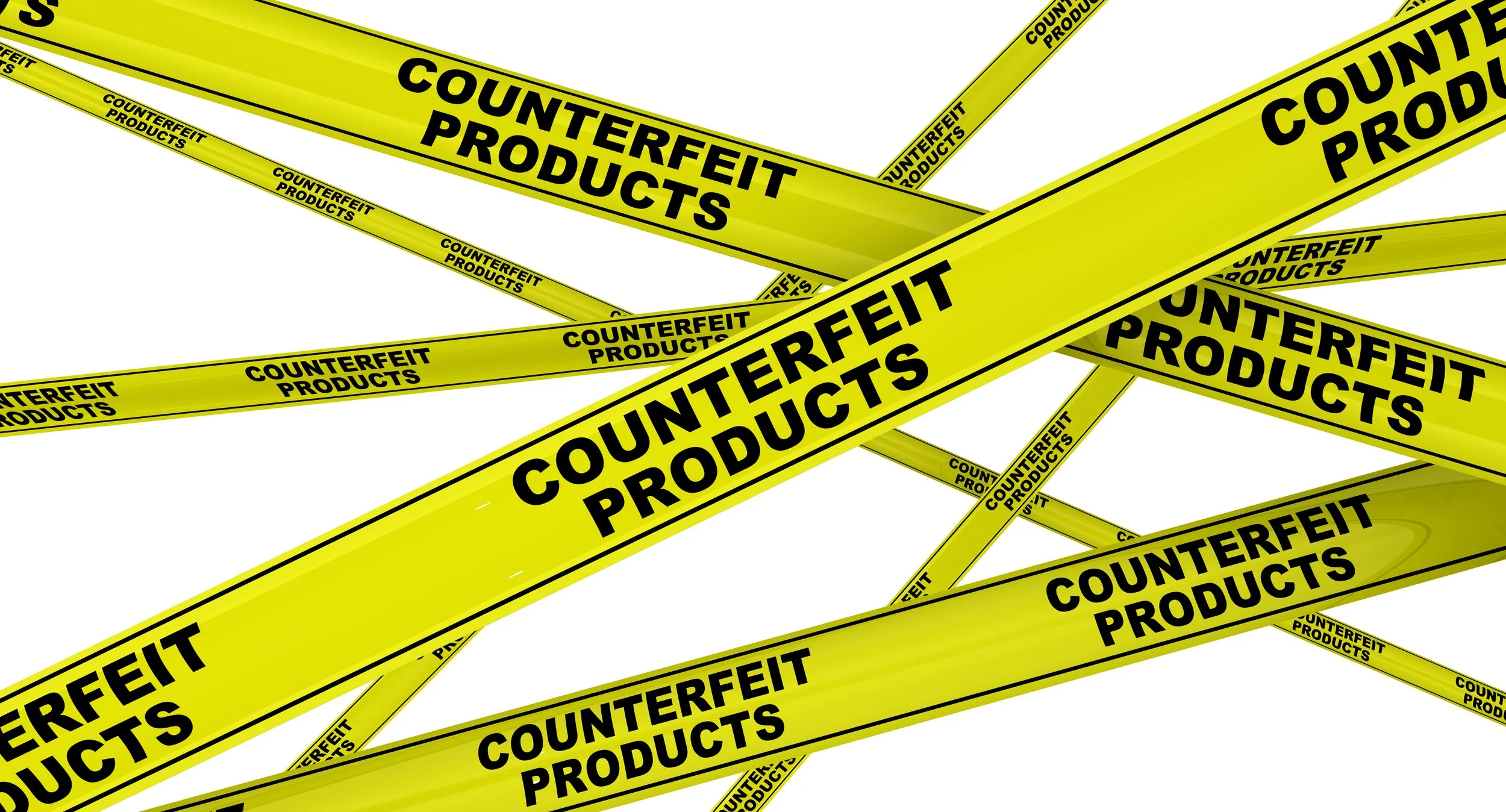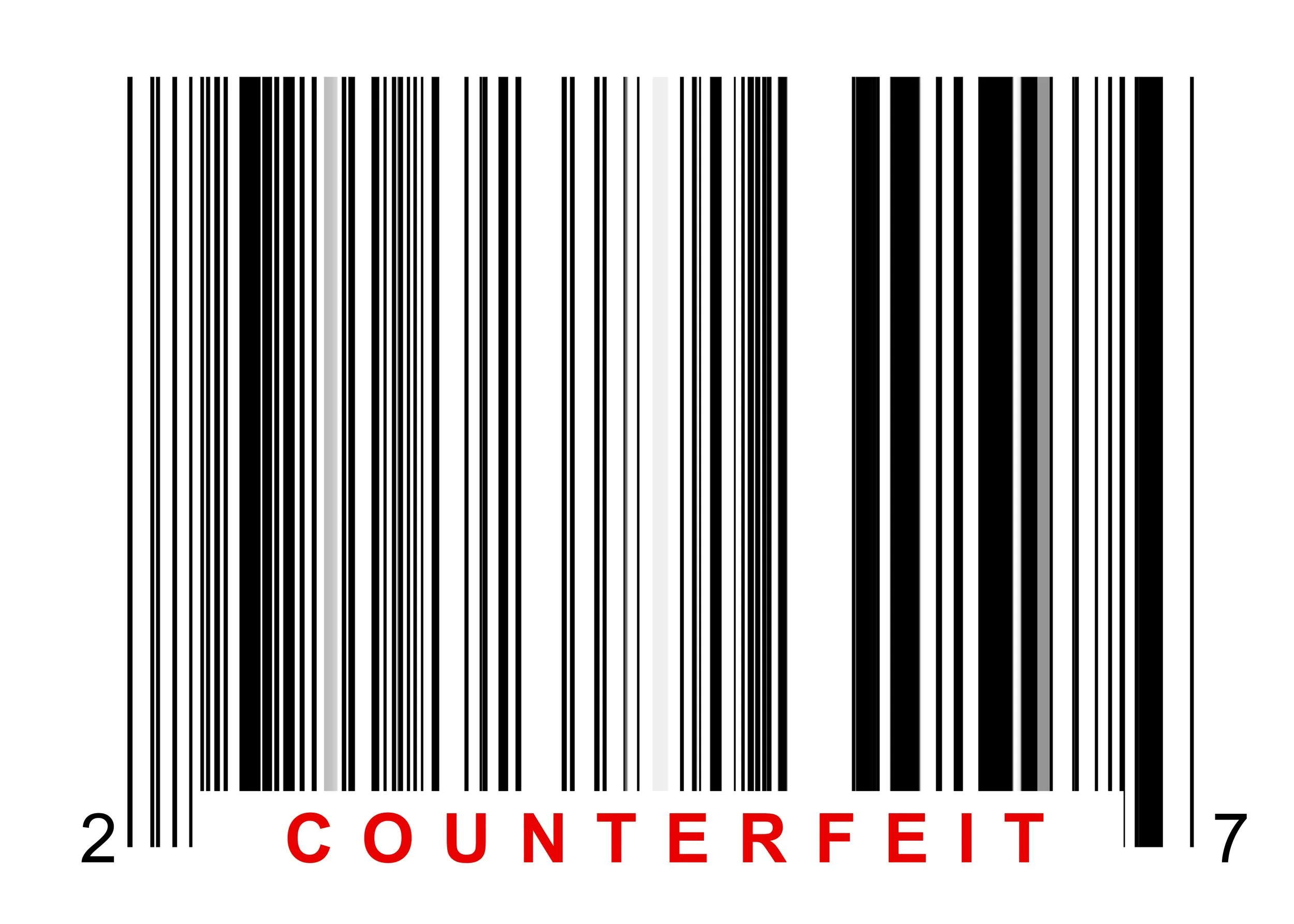The Business of Counterfeit Goods
I’ve re-written this story many times in order to find the words to express the danger of buying goods that are counterfeit. Counterfeit consumer goods are products manufactured using inferior methods, made or sold under another's brand name without the brand owner's authorization. Sellers of such goods intentionally infringe on the trademark, patent or copyright of the brand owner by passing off its goods as made by the brand owner. Counterfeit goods have become an unfortunate part of the retail fashion industry and are dangerous to consumers.
As a way of post-pandemic life we are shopping more online , and many of us from Amazon who allows an unregulated marketplace (more on that). The shopping experience has changed for all of us which has created the opportunity for more counterfeit products. It’s hard to ensure authenticity when you are predominately purchasing from online stores. Amazon is the go-to website for fast shipping, but buyer beware, they do not have any sort of checks in place to confirm that designer goods sold on its site are authentic. Many of us have unknowingly purchased “bootlegged” or counterfeit products that were sold on the site. Not to mention organized retail crime (ORC) groups that sell stolen products on the site. After working retail for many years, I’ve witnessed many stolen and counterfeit products being exchanged. I have grown a deep passion to help educate consumers to ‘spot a fake’ and to do the right thing by not buying into organizations that produce them. I’m on a mission to educate and share a personal Style Story, The Business of Counterfeit Goods with you.
Images of Counterfeit bags sold on the streets
Did you ever attend one of those popular “Bag Parties” many years ago, like I did? I thought it was exciting to score amazing discounts on knock off “designer” bags, and I remember enjoying those parties. Back then, I did not understand how it all worked and true to our "thrill of the deal" urge I never asked or understood exactly where those fake bags came from. At the time, $30 for what I believed was a real Kate Spade felt like I had won a coveted prize.
Did you know that in some crime rings the funding of counterfeit products has been linked to terrorist organizations? After large raids and the uncovering of counterfeit goods, millions of dollars have been confiscated and taken away from the brands we love and cherish. The coveted fashion designers we admire are impacted when we buy a fake version of their product. It is so easily knocked off and is illegal to replicate. Sometimes they are so good that you cannot tell the difference. The majority of us do not willingly intend to contribute to crime organizations and do not intentionally mean any harm. I believe there needs to be more awareness and education presented to consumers.
The U.S. Customs and Border Protection seize approximately $1.26 billion of counterfeit goods on an annual basis.
Here are Some Tools to Confirm Authenticity:
Read, read, read seller reviews.
MANY designer brands DO NOT authorize the sale of their products online. Go to the store directly to purchase and obtain a certificate of authenticity.
Is the retailer well known? Do they sell a lot of designer brands? Designers make choices on who carries their product and will remove from retailers that do not honor their standards of selling. For example, Chanel does not authorize and online retailer to sell their products online. If you see it offered for sale on a website, they are not authorized by Chanel.
If the cost is too low, more than likely it is fake. The majority of licensed brands have a standard mark-up from wholesale price. If it is discounted too much they would loose money. Huge RED FLAG if it’s much less than retail. This is especially true for fragrances and they should be similar in price at any reputable fragrance store. Also, if the store has a tester ask for a sample, counterfeit perfume does not smell exactly the same.
Metal hardware with a rough, low-quality, easily tarnishes, and varies in color. The majority of handbags have details in the metal such as branded stamped logos or unique identifiers. Make sure words are spelled correctly and letters are reading the correct way.
Complete a smell test on handbags, does it smell like natural leather? We all know how it smells and if it smells like plastic, FAKE. Touching leather, silk, and cashmere have special care instructions and a distinct feel. If they don’t feel right, more than likely it’s not authentic.
A unique serial number imprinted, embossed, or even lasered onto the item. Each designer utilizes numbers differently, so it can vary. However, each designer is consistent within their brand. For example, you can always expect to have a series of numbers lasered onto the lenses of all Chanel sunglasses to note authenticity.
Most designer bags have a colorless stamp of authenticity located somewhere in the bag, pressed into the leather. But they vary between bags. “Even within Hermès, the blind stamping is done different places, different handbags, different years” So you would have to know the exact stamp of the bag you bought, based on the year and style.
If you are purchasing from a seller online, ask what else the seller has available. If they have hundreds of Birkins for sale, you can guarantee it’s not real. Birkin bags are difficult to purchase because they limit who they sell to and take a long time to receive. “If it’s too good to be true” rule applies here and definitely important to follow.
The right lettering is an example of Chanel sunglasses and the laser serial number imprinted on the lenses
The Impact Of Buying Counterfeit Goods
Believe it or not there are even more reasons you should not buy into counterfeit goods. Not only does the purchase damage a designers brand, cheat them out of income, but the act is illegal. Many knockoff handbags and counterfeit goods are made in foreign countries by child laborers in unsafe and inhumane conditions.
Counterfeit products cost the global economy an estimated $250 billion a year. That figure translates into lost revenue to legitimate designer businesses and their employees.
Manufacturing, distributing and selling counterfeit goods is illegal and unethical. Buying designer “fakes” ,goods that carry a designer’s logo or label but were not made by the designer’s company, violates the intellectual property rights of the designer.
Counterfeiters “do not pay taxes, meaning less money for your city’s schools, hospitals, parks and other social programs,”
Most counterfeit goods are produced in sweatshops run by organized crime. We know that profits often support terrorist groups, drug smugglers, sex traffickers and street gangs. Sweatshops, in turn, are notorious for violating child-labor laws and basic human rights. Again, purchasing fake products violates the law, takes profits away from the real designer, and funds illegal crime groups.
Deadly Fakes? Counterfeit Goods are beyond Fashion
The problem isn’t confined to fake designer goods. There are counterfeit pharmaceuticals, consumer electronics, computer parts, software, car parts, motorcycles, airplane parts, toys, watches and jewelry.
Many fakes are unsafe and can lead to death. Counterfeit drugs that were known treat cancer, HIV and malaria have led to deaths. Additionally, counterfeit electronics, vehicle airbags, cosmetics, baby formula and other food products.
Unlike legitimate products, counterfeits aren’t inspected or regulated by government agencies, so consumers have no guarantees of safety or efficacy. Cracking down on counterfeiting protects consumers — and legitimate jobs and industries worldwide.
The United States, with its huge markets and reach, remains the Number 1 destination for fake merchandise.
I hope that the Reasons Not to Buy a Fake impacted you like it did me. After working in the industry and witnessing the fakes in my profession, I’ve forgiven myself for those bag parties. However, I’d never forgive myself if I didn’t share what I’ve learned with in hopes that you will share too. Please friends, do your research, ask questions, purchase from a legitimate source, and check twice before you invest in designer brands.

